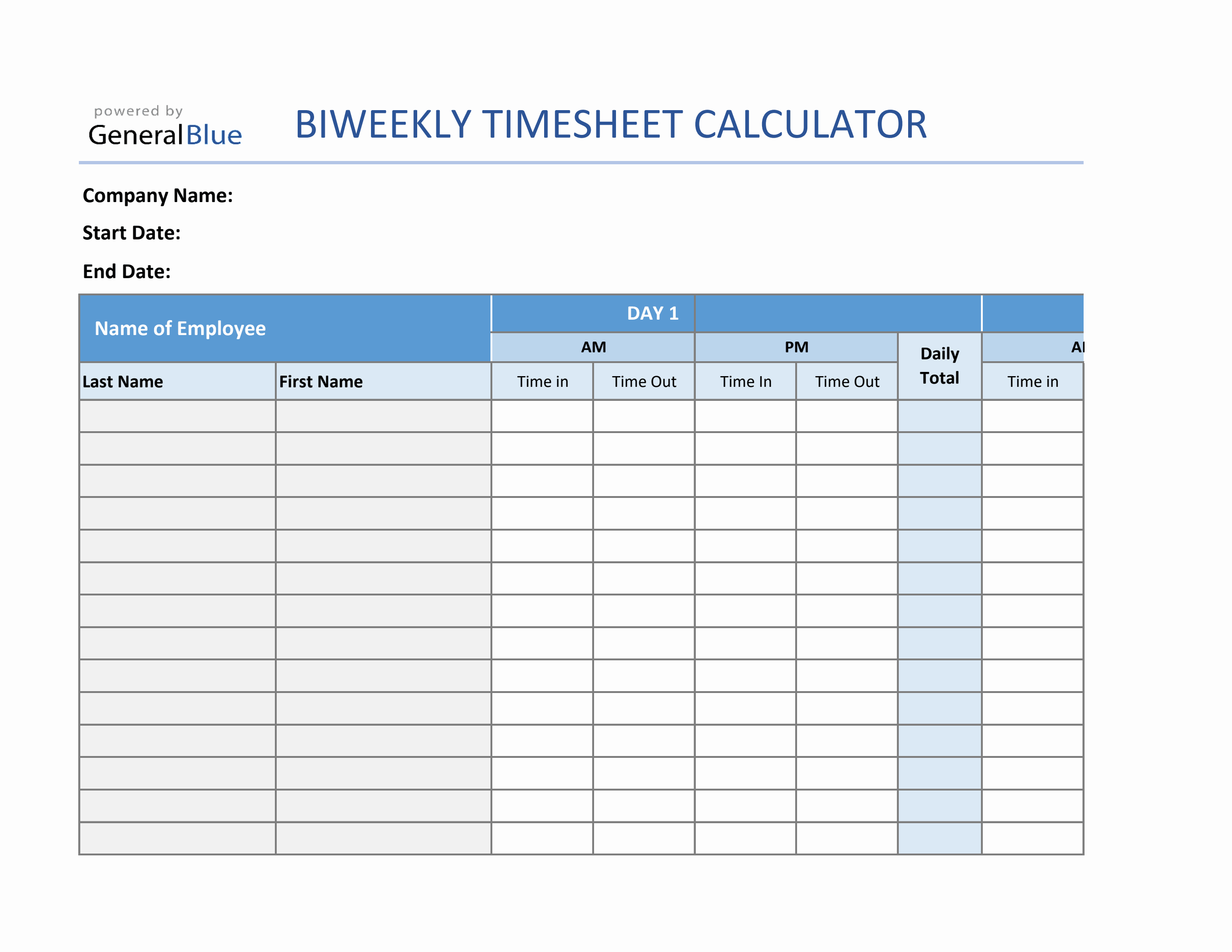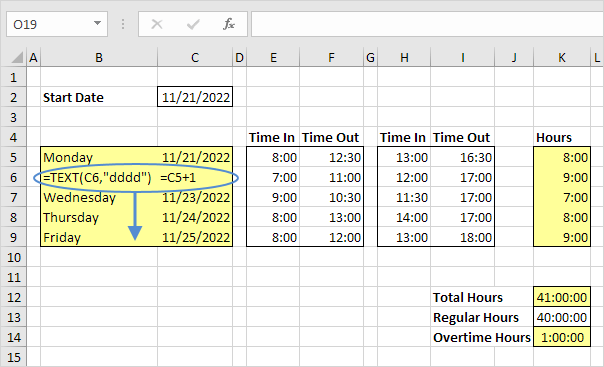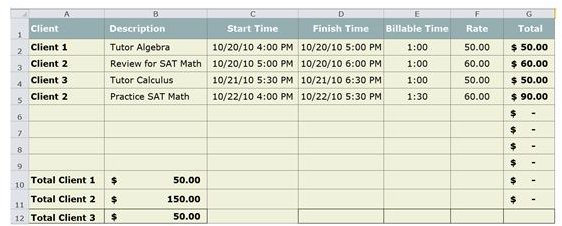
In cell A4, enter the first date that you want to start recording the working time.Here’s how to add a continuous date to your Excel timesheet and highlight the weekends in color: Now all rows above cell A4 are fixed in place. Now click on the “Freeze panes” button under the “View” tab and select “ Freeze panes”. Finally, freeze the upper three rows of your table so that they remain visible to the employee even when they scroll down.The “Transfer format” button in the upper left corner of the menu helps you to speed up the design process.

Connected cells and different fill colors can help to separate individual areas from each other. Keep the column widths consistent to create a better overview and be more visually appealing. Use bold writing and different fonts, sizes and colors as you see fit. In row 3, enter the column headings “Date”, “Time in”, “Start of break”, “End of break”, “Time out”, “Absences”, “Actual working hours” and “Plus/minus hours” one after the other.the HR department), the timesheet should be sent to and which subject the email should have. Another aid: In row 2 you can explain which email address (e.g.To do this, enter the formula =TODAY() in cell H1 and confirm by clicking on “enter”. A small aid to help your employees: a current date display, which makes it easier for them to find the right row in the time sheet.This value serves as a reference for the calculation formulas that we plan to include later in the table. In cell D1, enter the daily target working time of the employee using the format hh:mm (h = hours, m = minutes), for example, 08:00 (8 a.m.).In cell A1, enter the name of the employee.Managers can then calculate the employee’s total time for payroll.Here is how you equip the header of the Excel spreadsheet with all the necessary information, set up the columns, and format your timesheet clearly:

Step 3: When it’s time to hand the timesheet in, employees sign the top of the form. Step 2: Employees can fill in the day, date, job/shift, job/shift code, their time in/out (including breaks), and any remaining hours (overtime, sick, holiday, and vacation). Step 1: Fill in your employee’s name, their manager, your company’s name, the pay period start date, your employee’s standard pay rate, and your employee’s overtime pay rate. Once you’ve downloaded it, here’s how to use it. And while we have found that a mobile time clock app is the best time tracking solution, for the spreadsheet enthusiast, we’ve designed a free Excel solution.

There are easier and more accurate ways to track employee hours, but if you’re set on sticking to manual timesheets, it helps to know what you’re looking for. Most of us know how to use Microsoft Excel, and it’s a step up from printed paper timesheets. A quarter of businesses surveyed use paper or spreadsheets to track employee time, and it’s not hard to understand why.


 0 kommentar(er)
0 kommentar(er)
